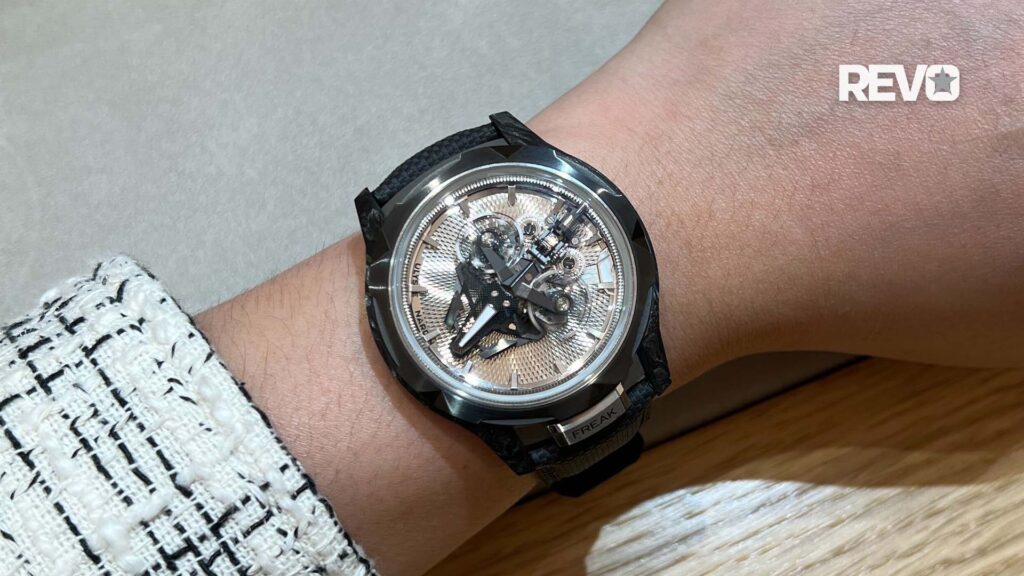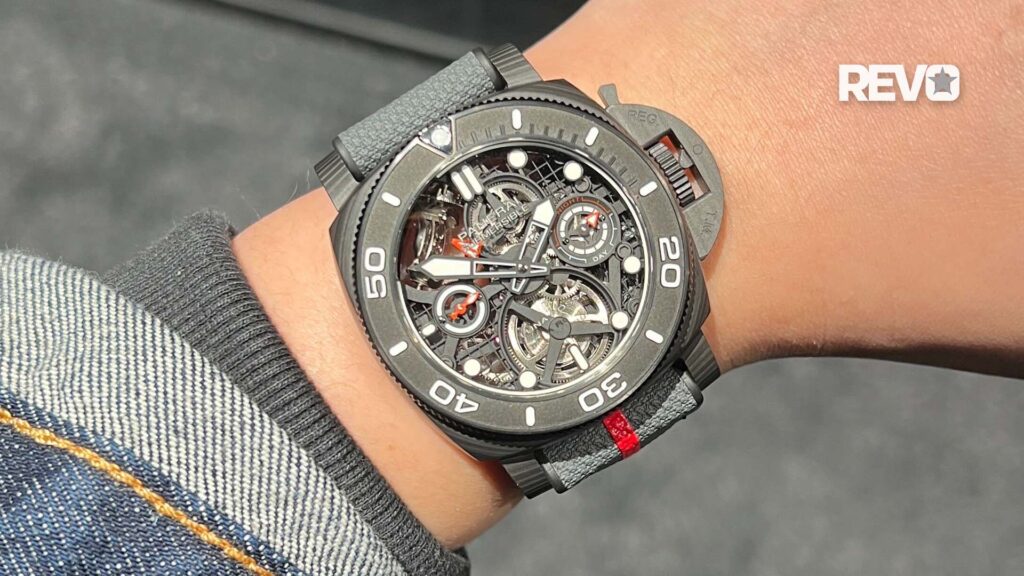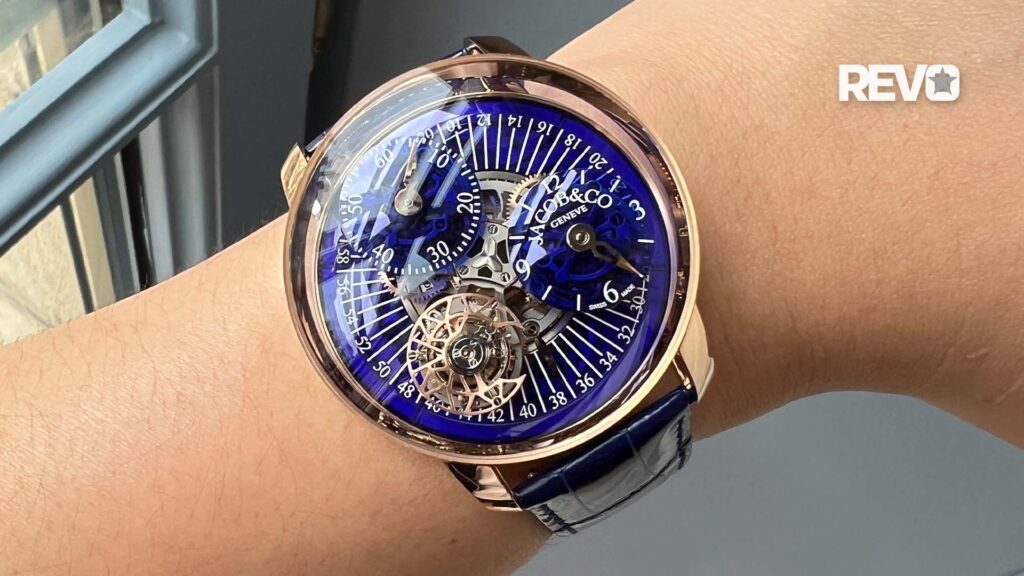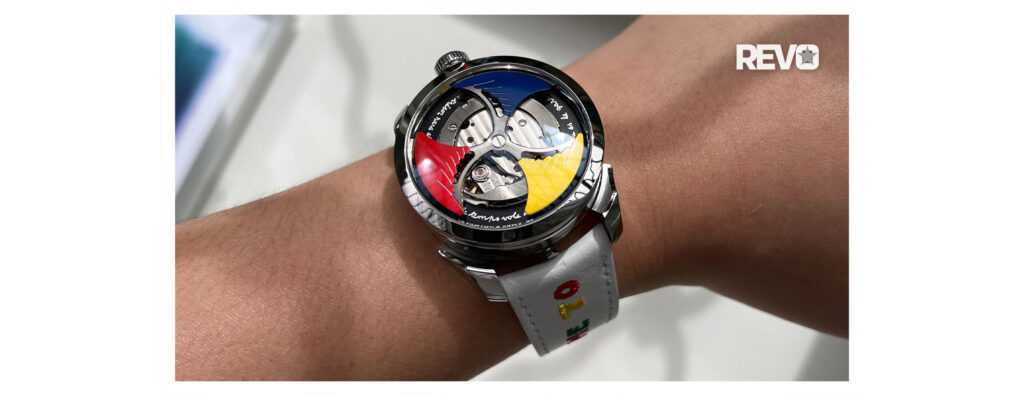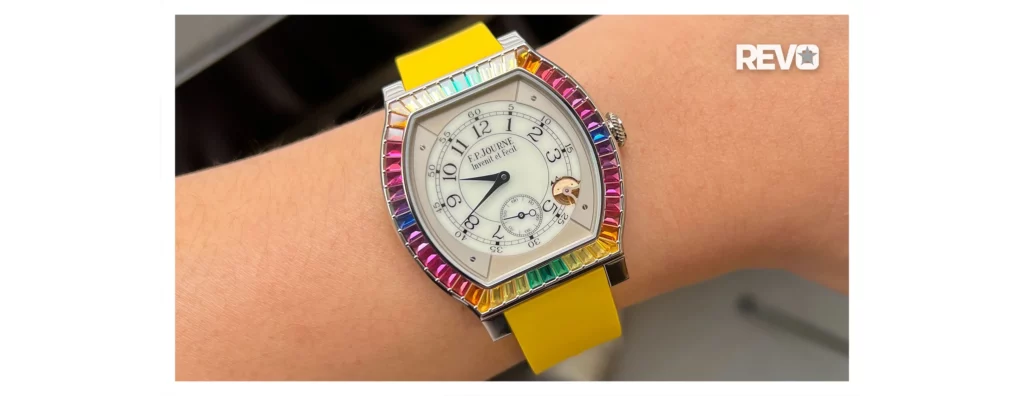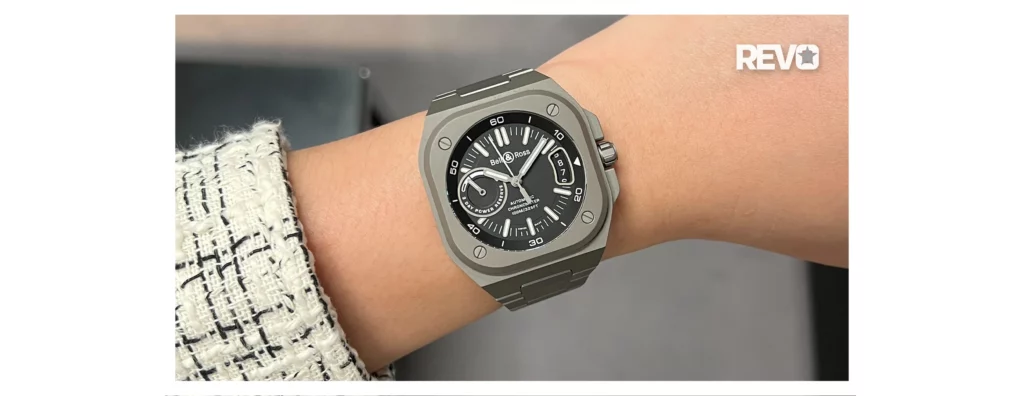IWC Schaffhausen
The Omani Gift of Time
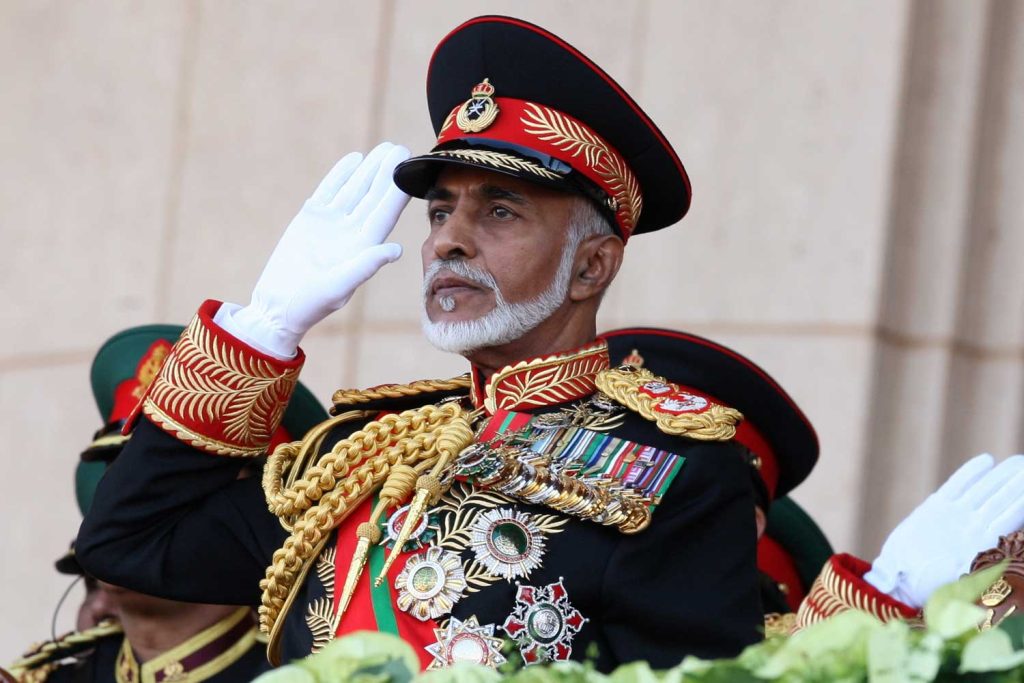
The late Sultan Qaboos bin Said Al Said of Oman
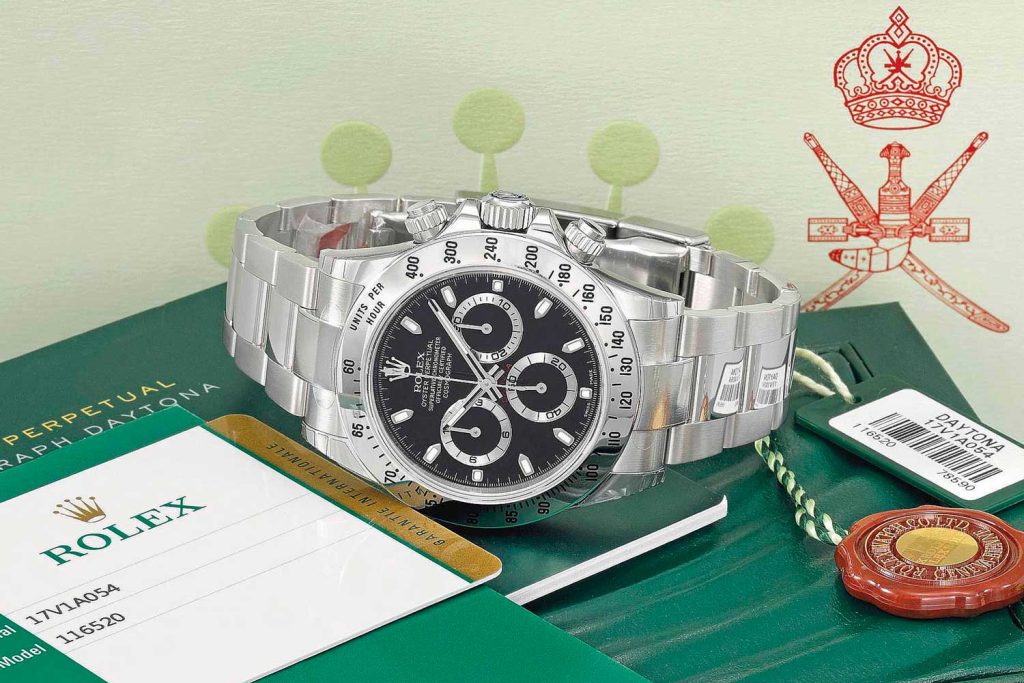
Khanjar Daytona 116520 (Image: Christie's)
The new Sultan began using the oil wealth of Oman to develop the country and improve its infrastructure. He established a new name for the country, the ‘Sultanate of Oman’, which replaced the old ‘Muscat and Oman’ and replaced the old white flag with a red, white and green flag which featured a new national emblem – the Khanjar. The emblem featured a sheathed Khanjar dagger on top of two crossed swords. It is this iconic emblem that has been printed on the dials and engraved on the casebacks of a great number of watches that were given as gifts by the Sultan over the past five decades. Today we round up some of the most interesting and notable that have appeared over the years.
Rolex 1665 Sea-Dwellers
I briefly mentioned earlier the rebels that were causing concern in Oman. The ‘People’s Democratic Republic of Yemen’ were a Marxist group based in Dhofar and they eventually numbered around 15,000 men. What makes it remarkable is that these rebels were essentially beaten by a battalion of around 80 SAS troops based in Oman, with support from local Omanis. The key battle was known as the Battle of Mirbat in July 1972, which was initially fought by a team of nine SAS troops. One of the world’s leading experts on the Rolex watches that are associated with this era, Daniel Bourn, picks up the story. “There is a custom in the Gulf of presenting gifts, often watches, in recognition of achievements, appreciation or as a mark of respect. British troops on active duty would not normally be allowed to accept such gifts. However in the case of Oman circa 1970-76 the restrictions did not apply. The SAS were never officially on active duty, but in Oman under the cover of the ‘British Army Training Team’ as the official documentation of the time advised.” The watches awarded to the soldiers who took part in this battle were reference 1665 Seadwellers. Watches from the ‘Double Red’ era, they had the text in the lower half of the dial replaced with a red or gold Khanjar or in some cases Qaboos’s signature in red. “Following a comprehensive study of the known serial numbers, I believe that approximately 80-90 examples were produced in a consecutively numbered batch starting with serial 3566,9xx and ending at 3567,0xx. Of these estimated 80-90 examples, approximately 30% are now known. The approximate number of watches issued is further supported by the number of SAS soldiers who served in Oman during the period 1970-1976 again reported to be in the 80s, so the assumption is that each soldier would have been allocated a RED Oman Sea-Dweller in recognition of their services. The use of the colour Red for the Khanjar or Qaboos signature on the dials is also relevant to the colour of the new Oman national flag during this period.”

Rolex Sea-Dwellers 1665 Red Khanjar (Image: Goldberger)
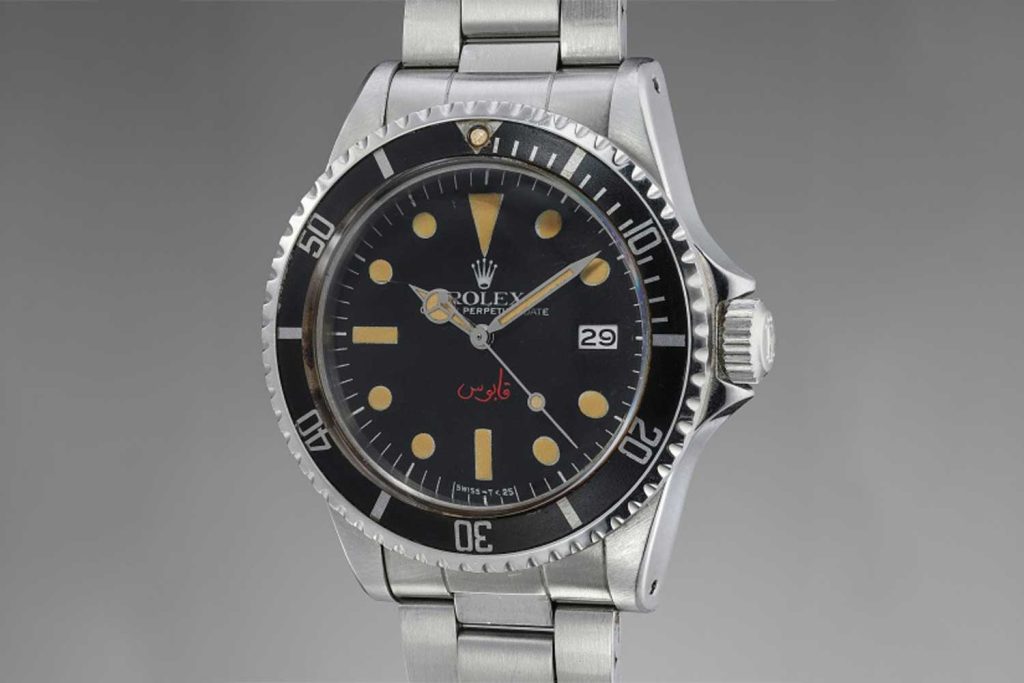
Rolex Sea-Dwellers 1665 Quaboos Signature (Image: RPR)
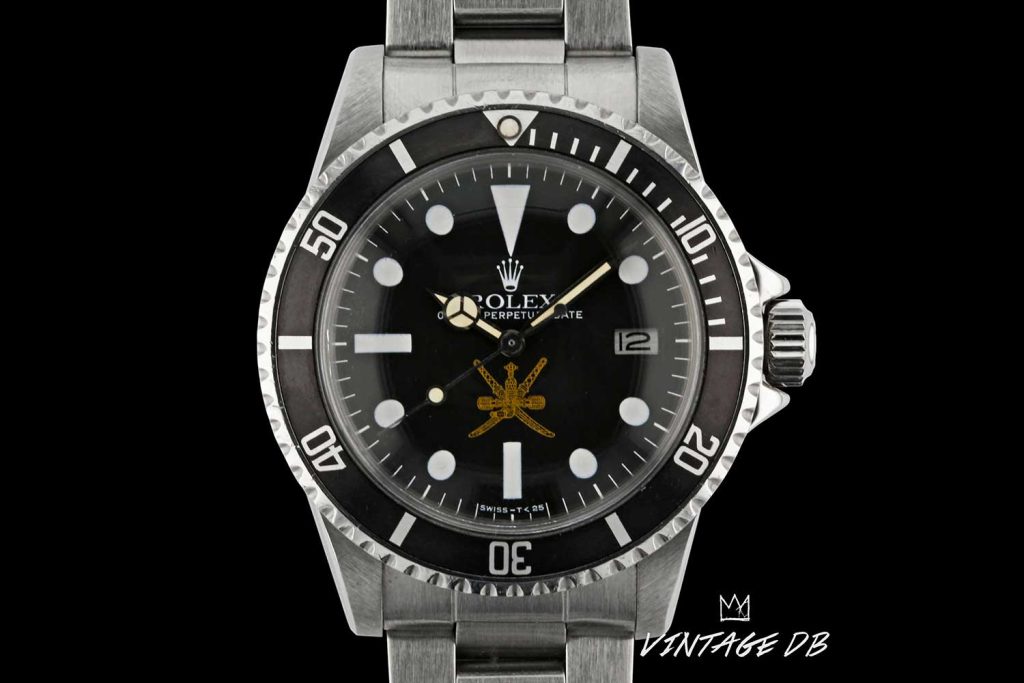
Rolex Sea-Dwellers 1665 Gold Khanjar (Image: Vintage DB)
Patek Nautilus
We can assume that The Sultan was a fan of steel sports watches, as there are a number out there as any Google search can testify to. This article is not intended to be comprehensive, but an overview of some of the pieces. In 1978 Sultan Qaboos ordered a batch of steel Patek Philippe Nautilus watches reference 3700. The watches feature Khanjars on the lower half of the dial and, again, it was Daniel Bourn who did the early research on these watches and discovered a pattern. “Given the interest, demand and ever increasing values of the genuine Oman issued Rolex watches, a special order Patek Philippe with the Oman Khanjar dial crest is important to both vintage Rolex & Patek Philippe collectors and increases the interest, understanding and significance of the 1970s Qaboos era watches,” states Bourn. The two watches pictured have consecutive serial and movement numbers and are highly prized, especially in the current market frenzy for steel Patek sports watches.
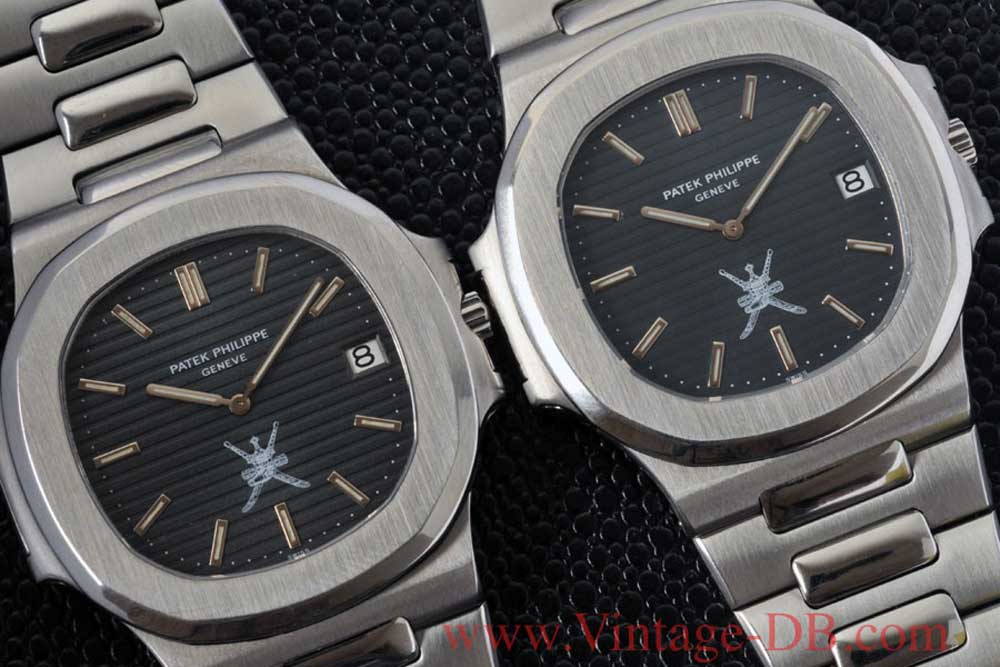
Patek Philippe Nautilus 3700 Khanjar (Image: Vintage DB)
IWC Ingenieur
The story of this yellow gold IWC is told beautifully here by the inimitable Nick Foulkes. Dating to the decade after the conflict with the insurgents, this 1980s IWC does feature the Royal Standard in red. The Royal Standard is the national emblem of the Khanjar but with the addition of the Sultan’s crown atop the dagger. It’s a stunning watch and demonstrates that actually, the Sultan’s court weren’t just keen on steel sports watches. The Diwan of the Sultan was responsible for ordering the watches, at that time mainly through Asprey in London. As Foulkes states of these IWCs of the era: “They were watches of a design and funkiness that is decidedly at odds with the austere Germanic style of Schaffhausen and puts one in mind of the more outrageous creations of Piaget at the zenith of the Yves Piaget era. And after a bit of rooting around in the archives at IWC, it seems that the Diwan of the Sultan during these decades shared my taste for disco-era extravagance.”
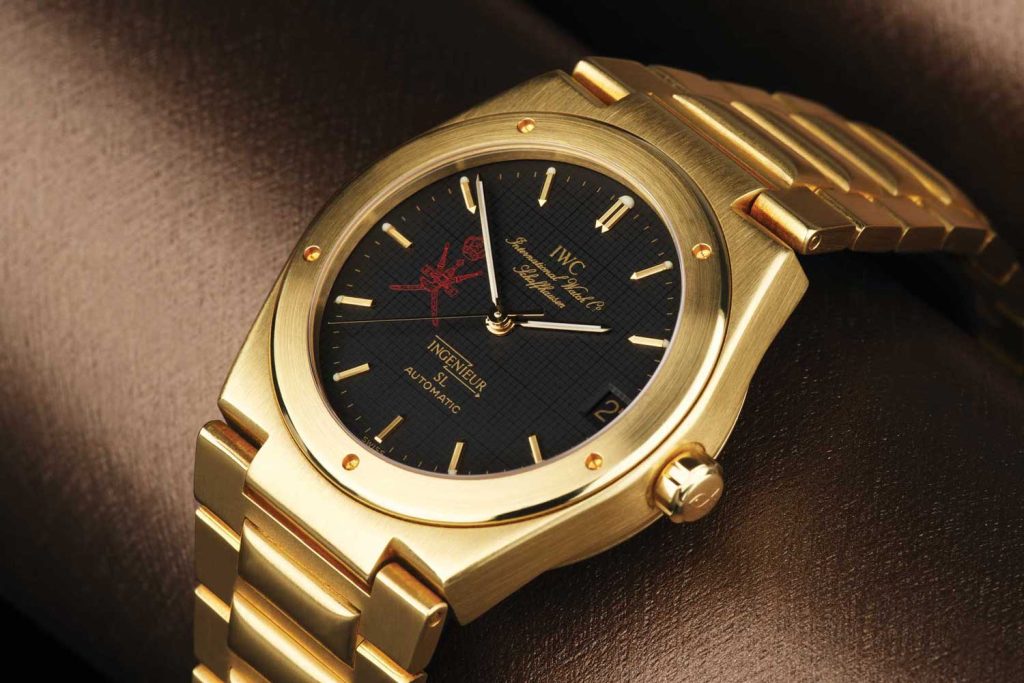
IWC Ingenieur (Image © watchclub.com)
Front to Back
As production methods changed and quality control levels were ramped up, brands became less free to produce unique dials featuring the Khanjar. From the 1990s onwards many of the presentation watches had their casebacks engraved, especially Rolex and Omega. These caseback engravings were generally done in the region and were supplemented by Khanjar stamps on the watch boxes too.

Khanjar Daytona 116520 (Image: Christie's)
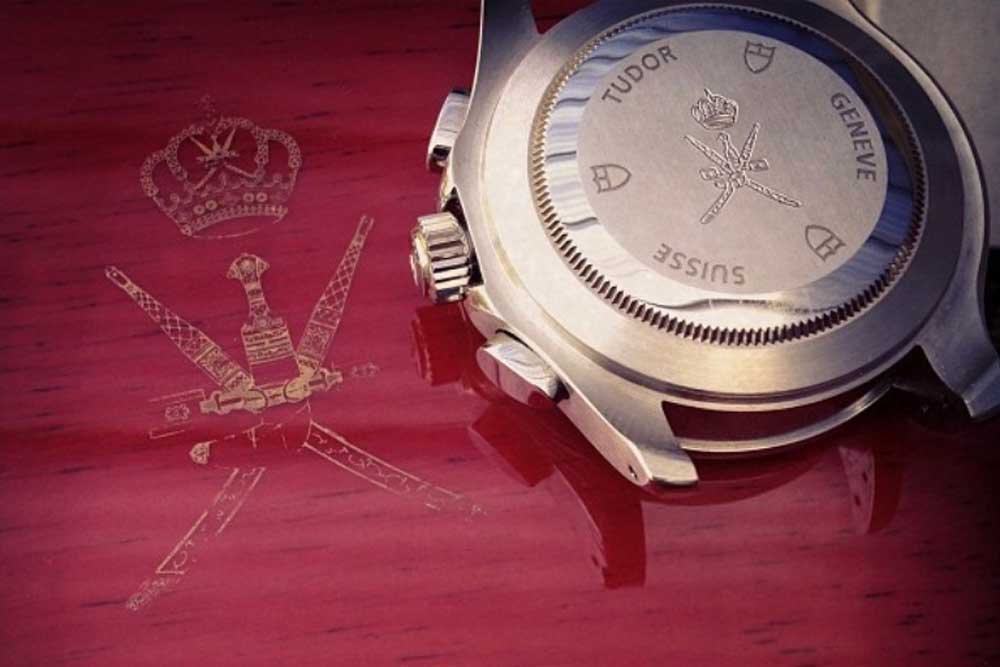
Tudor Khanjar (Image: Ross Povey)




